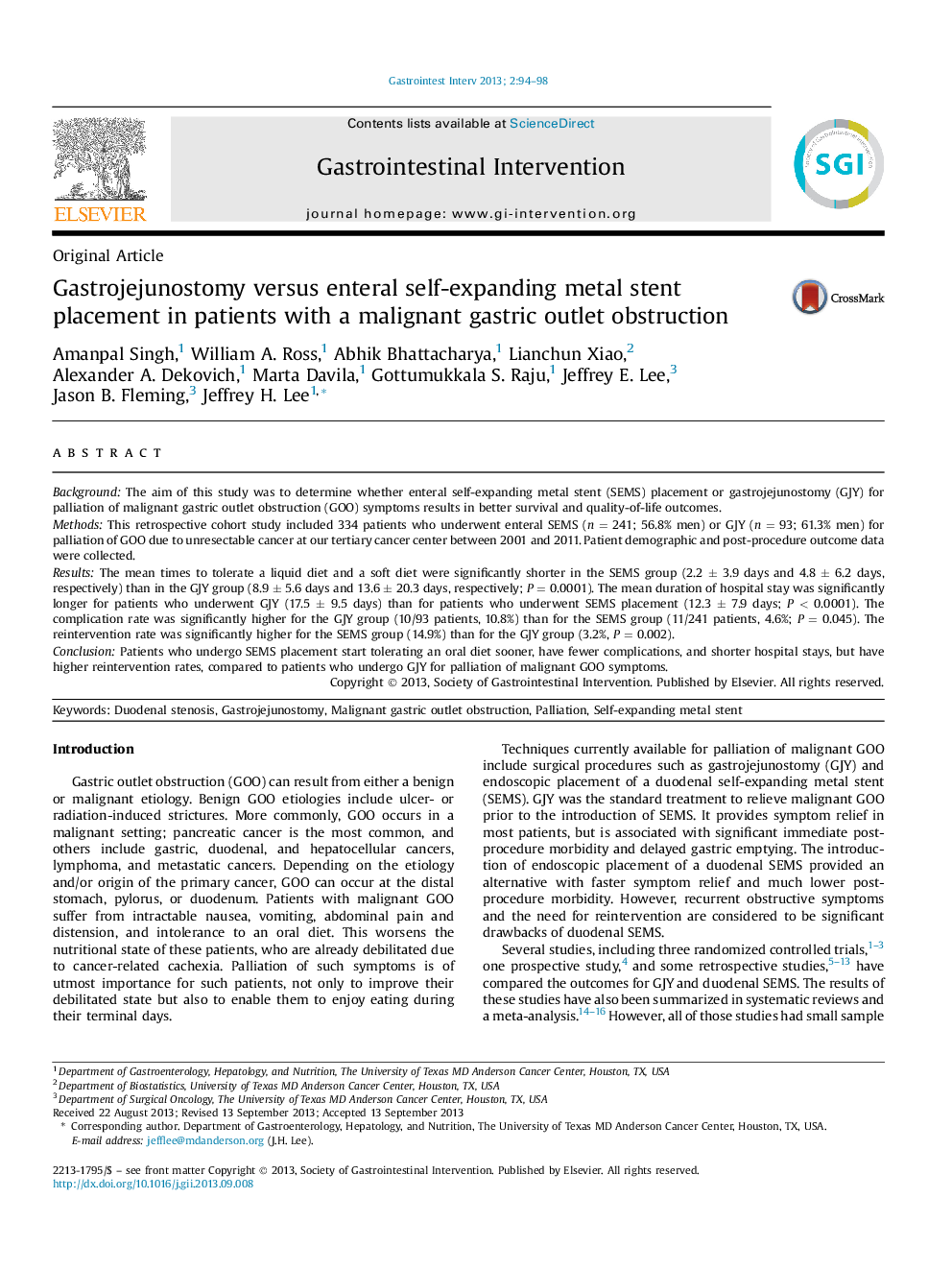| Article ID | Journal | Published Year | Pages | File Type |
|---|---|---|---|---|
| 3310966 | Gastrointestinal Intervention | 2013 | 5 Pages |
BackgroundThe aim of this study was to determine whether enteral self-expanding metal stent (SEMS) placement or gastrojejunostomy (GJY) for palliation of malignant gastric outlet obstruction (GOO) symptoms results in better survival and quality-of-life outcomes.MethodsThis retrospective cohort study included 334 patients who underwent enteral SEMS (n = 241; 56.8% men) or GJY (n = 93; 61.3% men) for palliation of GOO due to unresectable cancer at our tertiary cancer center between 2001 and 2011. Patient demographic and post-procedure outcome data were collected.ResultsThe mean times to tolerate a liquid diet and a soft diet were significantly shorter in the SEMS group (2.2 ± 3.9 days and 4.8 ± 6.2 days, respectively) than in the GJY group (8.9 ± 5.6 days and 13.6 ± 20.3 days, respectively; P = 0.0001). The mean duration of hospital stay was significantly longer for patients who underwent GJY (17.5 ± 9.5 days) than for patients who underwent SEMS placement (12.3 ± 7.9 days; P < 0.0001). The complication rate was significantly higher for the GJY group (10/93 patients, 10.8%) than for the SEMS group (11/241 patients, 4.6%; P = 0.045). The reintervention rate was significantly higher for the SEMS group (14.9%) than for the GJY group (3.2%, P = 0.002).ConclusionPatients who undergo SEMS placement start tolerating an oral diet sooner, have fewer complications, and shorter hospital stays, but have higher reintervention rates, compared to patients who undergo GJY for palliation of malignant GOO symptoms.
